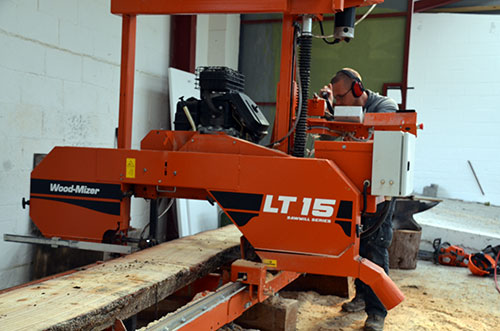We have some steep north facing slopes on the farm that are gradually being taken over by encroaching bracken. Azulox has been phased out for spraying bracken and the slopes are too steep for machinery. Even with heavy grazing or hoof pressure there is no realistic cost-efficient way of controlling the bracken and we are seeing ticks here for the first time. When the dogs run through the bracken in summer they come back with ticks on them and we get them sometimes too. Ticks can transmit Lyme Disease, and we had a friend called Colin who contracted it this way in Scotland. He suffered for several years before committing suicide. It’s a nasty disease.
So we decided to plant this small block of about 7 acres back into woodland. Our stewardship scheme in Wales, Tir Gofal, had finished and with the changes in Single Farm Payments, although we have each year ticked the box expressing interest in Glastir, which is the re-vamped ‘greening’ scheme, we have been unable to obtain any response from the powers that be. Theoretically there have been good grants for woodland plantings, but we have been unable to get a coherent response from anyone. They keep saying that grants are not available at the moment and we have to wait.
Meanwhile the bracken has advanced alarmingly, year on year. What started as a mere pubescent student’s beard has turned into a marauding Mongolian horde. If we don’t plant it soon, the whole slope will be solid bracken.
We have a modest tree nursery in the Bevis shed where we grow a few hundred trees. I try to plant on average two trees a day and have managed to do this for the last 26 years. 2014 was a good acorn year and we collected a lot of acorns, and also quite a bit of beech mast, for the tree nursery. I gathered many of them from the woodlands belonging to a friend called Tula. She is struggling at the moment with oesophageal cancer, and so we decided to name the new woodland ‘Tula’s Wood’. The seedlings had reached 30-60 cm and I had planted them out into individual pots last year so that they could grow large enough to outcompete surrounding vegetation, and also could be planted out later in the spring. We also bought in some bare rooted stock of species we don’t have enough of, such as field maple. We wanted to keep some open areas and also not shade out the tracks too closely, so Drew has planted those fringes with guilder rose. We also obtained some good quality cob nuts and grew them on, so that the hazels will be a good productive strain. We’d like to bring back the elms but resistant trees are very expensive. So we bought in some wych-elm as a substitute. We have one wych elm tree on the farm, in old woodland below the lake, so we thought it was time it had some moral support!
Over the wet winter, Drew has been very busy planting out the bare-rooted stock, and Neil and Dai got on with the fencing. Before it was finally stock proof the tack sheep kept getting in, but although they ate out a few tops, by and large they helped clean out the old field.
Drew had been marking the new trees with canes, but in total there are still large areas of the bank still unplanted. The trees are placed randomly and naturally and we have not used tree guards because we have no deer and there are only a couple of rabbits on this cold north facing slope. If they start to get any big ideas we will re-cycle them and keep the trees safe until the leaders are too high for animals to bite off.
Our experience on the farm has shown that the only way to stop the young trees being choked and lost in the bracken is to spray around them in their first season. So Drew has been busy scrambling across the slope with a back pack sprayer. A blue dye in the spray enables him to see which trees he has done. Now the bracken is starting to uncurl the first leaf and before too long everything will become engulfed.
But in the autumn of 2014, when there were plenty of acorns, the jays got busy, and they hid acorns and some hazel nuts all over the slopes. Now these have sprouted. These seedlings also need marking and protecting, so I have been out with canes this week looking for the first red leaves of the tiny oak trees. So far I have put out over 450 canes, and there are still more trees to find. The old ash trees up at the top west end of the slope have also managed to spread their wind-blown seeds a hundred metres or so into the field. So natural re-seeding from surrounding trees is already well on the way to getting this woodland established. No grants, no costs to the tax-payer, no forms, no administration charges. Thank you jays, thank you wind, and thank you to the surrounding trees and Tula for providing the seeds.
Nick



You must be logged in to post a comment.